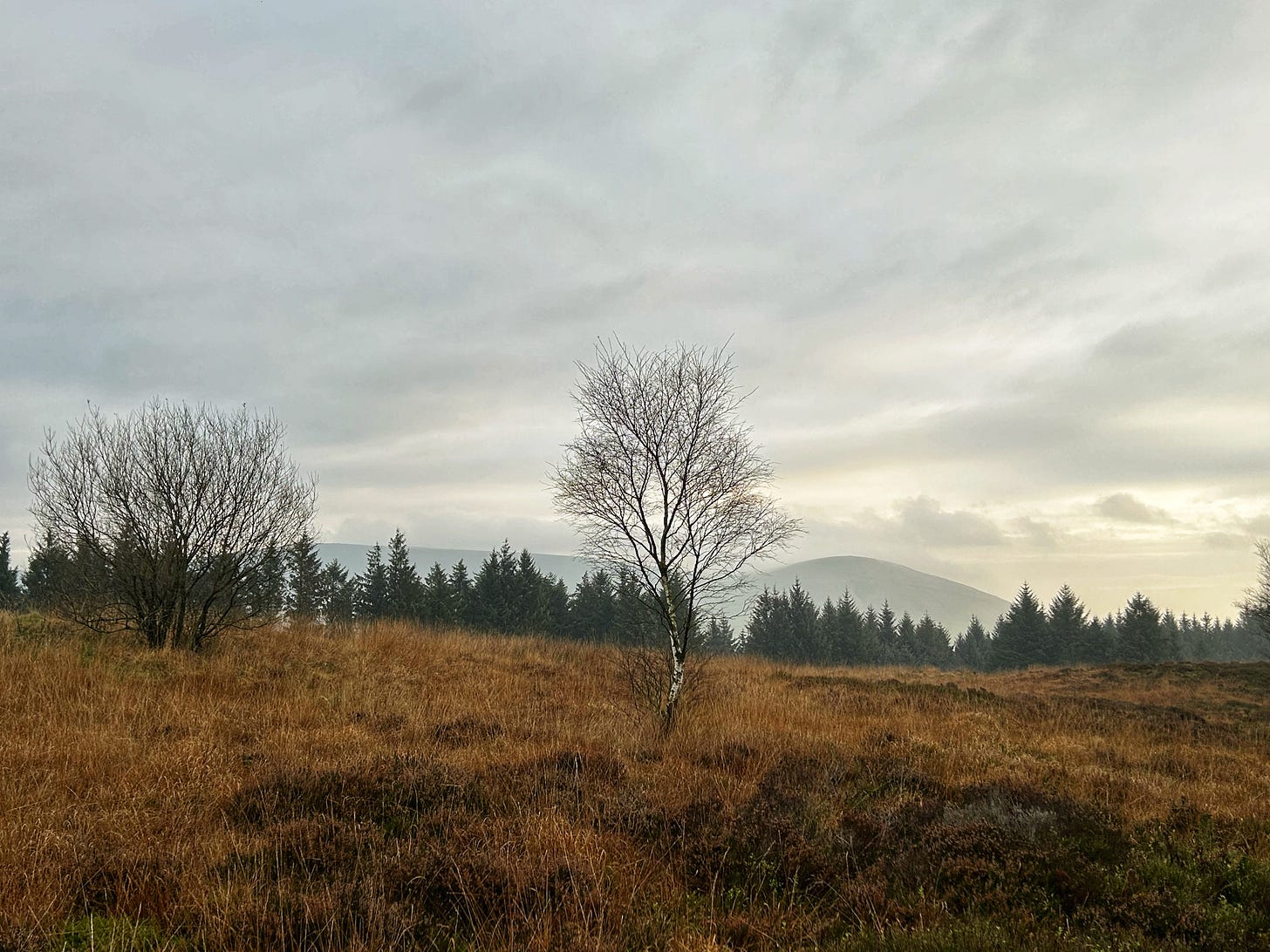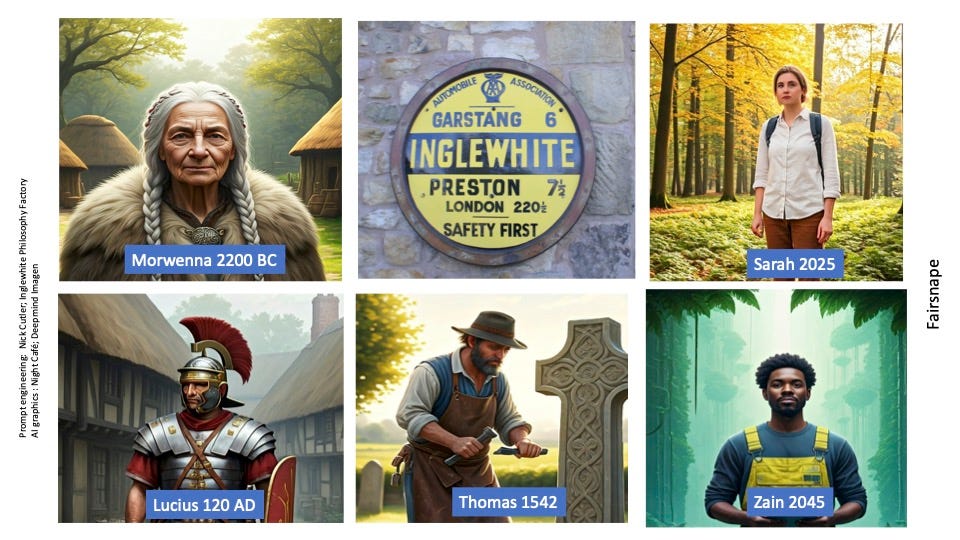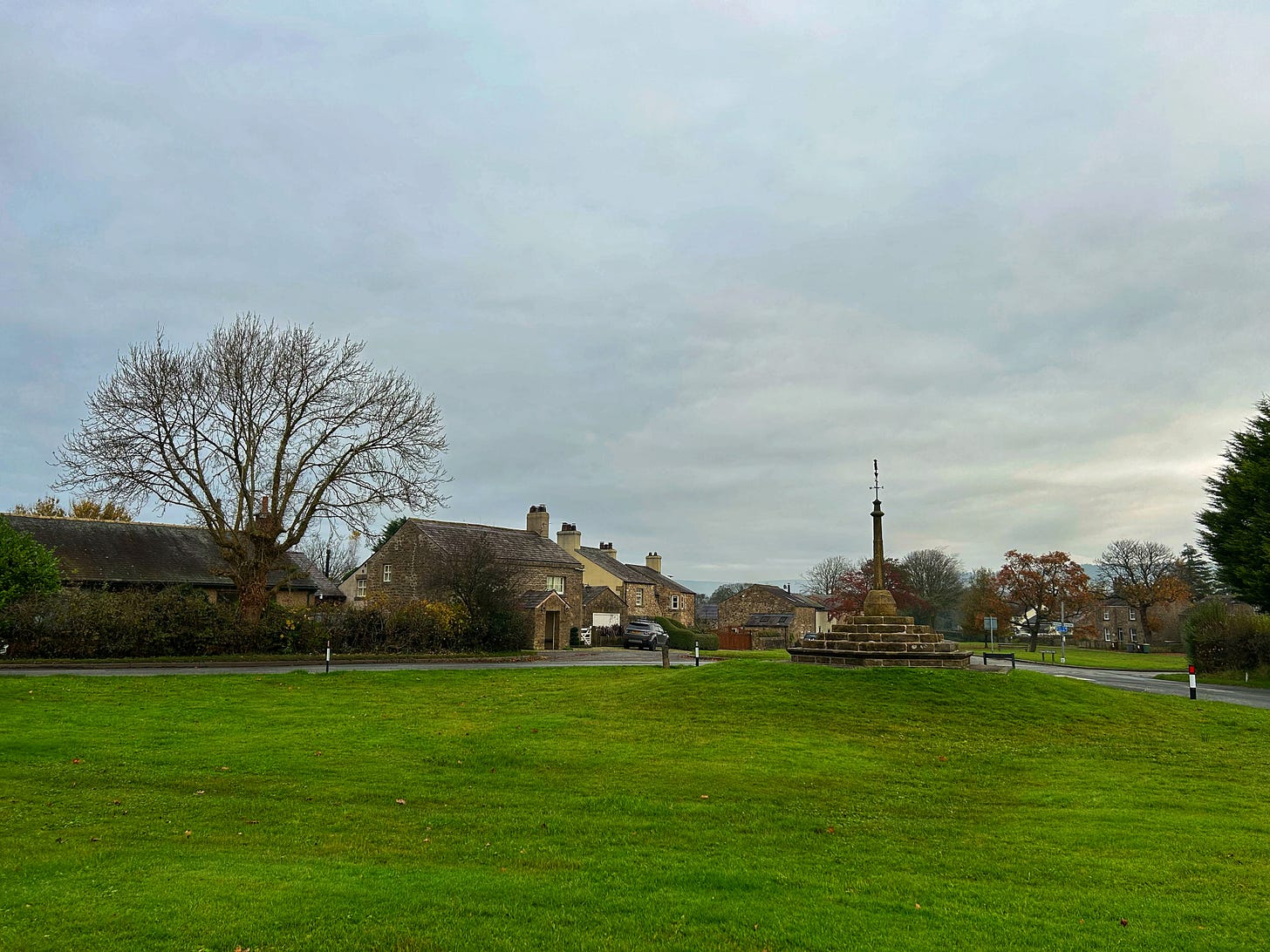Ahead of my presentation on Kinship at the JBD Biophilia Conference in London on the 12th of November, where I am scheduled for 17:50 … here is a little background to my evolving exploration of five characters, passing through our village in Lancashire.
"Five Autumns Through Time" follows five characters whose paths cross in the village of Inglewhite across four millennia, each arriving in autumn with their own purpose, each having a different perspective on kinship, yet connected by deeper threads to land and community.
Morwenna (2200 BC) A 45-year-old Bronze Age elder and keeper of sacred knowledge, travelling to help construct a wooden henge. She camps at what will become Inglewhite, using her astronomical wisdom to read the stars and sky. Her deep spiritual connection to the land, particularly through the ancient oaks and ash trees, establishes a story theme of humanity's relationship with nature.
Lucius (120 AD) - A Roman soldier marching along a newly constructed road through Brigantia. His encounter with the wild landscape, local Brigantes people, and their customs represent a clash of civilizations. Though he views the local beliefs with skeptisism, he finds himself moved by the land's mystery and the haunting local music. He follows the writings of Pliny the Elder’s Naturalis Historia, a tome of 38 volumes emphasising harmony and balance with nature.
Thomas (1524 AD) - A 38-year-old stonemason from Preston, commissioned to build Inglewhite's village cross during the tumultuous period of Henry VIII's reign. His work bridges the physical and spiritual, incorporating ancient symbols into his design while contemplating the changing relationship between people and their environment. Thomas's relationship with nature comes from his religious belief but are changing with emerging Renaissance thinking
Sarah (2025 AD) - An environmentalist walking the Bowland Roman Road trail, studying climate change's effects on the landscape. Her journey reveals both concern for environmental degradation and hope in emerging regenerative practices. Through her observations, she connects ancient wisdom with modern ecological understanding. Her regenerative approach is at the transition from the Anthropocene to a Symbiocene,
Zain (2042 AD) - A Biocultural Heritage Officer whose high-tech tools allow him to see multiple layers of history while monitoring ecosystem health. His story shows how society has evolved to blend traditional knowledge with advanced technology in response to environmental challenges.
With Zain’s AI developed technology, he can convene the travellers in a meeting of minds on the village green, leading to a fascinating and inspirational conversation.
The narrative arc connects the five characters through shared elements: a local spring, local trees, the Bowland hills, night skies and folklore, and most importantly, their relationship with the land. Each character's perspective reveals how humanity's connection with nature has evolved, from Morwenna's spiritual harmony to Zain's technologically mediated but renewed kinship with the environment. Together, they tell a story of continuity and change, loss and renewal, and the enduring importance of place in human experience.
Through five different perspectives over time, we can explore what spirit of place, kinship regenerative, beauty & biophilia means to us today. This work is raising many questions for me on my understanding, and in the guidance I provide on how we respect and acknowledge ancestral wisdom (and failings), how we are grounded in the present and how we are ourselves being good ancestors.







Really love this concept, and I particularly love the painting, "Bowland Autumn Journey"